Hi everyone! I just wanted to let you know that I worked with Garrett Wade, which has some very cool garden tools, on this post. I was compensated for my time and provided samples to try out. As always, my words and thoughts are genuine and mine alone.
I took a look at the extended weather forecast over the weekend and I noticed a disturbing trend: temperatures that are starting to inch downward. The low for one night this week is forecast to be 59. I’ll be honest, I’m not a fan of this trend. I’m in a bit of denial about the impending change of seasons.
But that kind of denial doesn’t serve gardeners well. With a bit of gas back in our collective tanks (you did sit back and relax a little over these hot days of summer, I hope) gardeners need to be gearing up for a big season ahead. Dividing, planting, moving and cleaning up are all on my gardening radar.
I’m starting to gear up for all of that activity in the garden. Although I planted the vegetable garden late, most of the plants have caught up and I’ve been trying to stay on top of harvesting to keep plants producing.
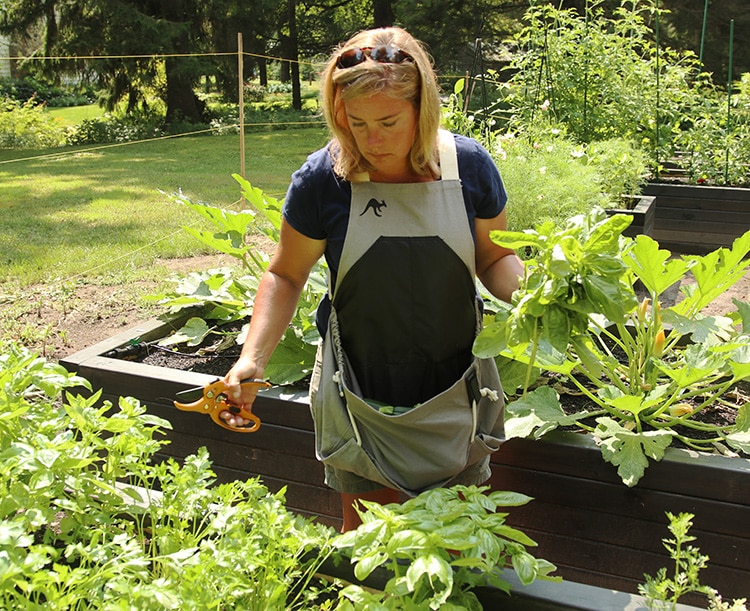
In recent days, the large bowls and baskets I’ve been carting out to the garden haven’t been big enough to hold my daily veggie collection, which is just fine because I’ve discovered on of my favorite gardening “tools” ever: a Harvest Apron. You might have seen these around because it seems like everyone who tries one falls head over heels for it. Picture an apron with a huge pouch-style pocket, but with a hole in the bottom. You flip it up and tuck it in two knots into plastic slides on the apron. Fill up the pouch and when it’s time to empty it, you just untuck the knots and all your beautiful veggies come out the bottom.
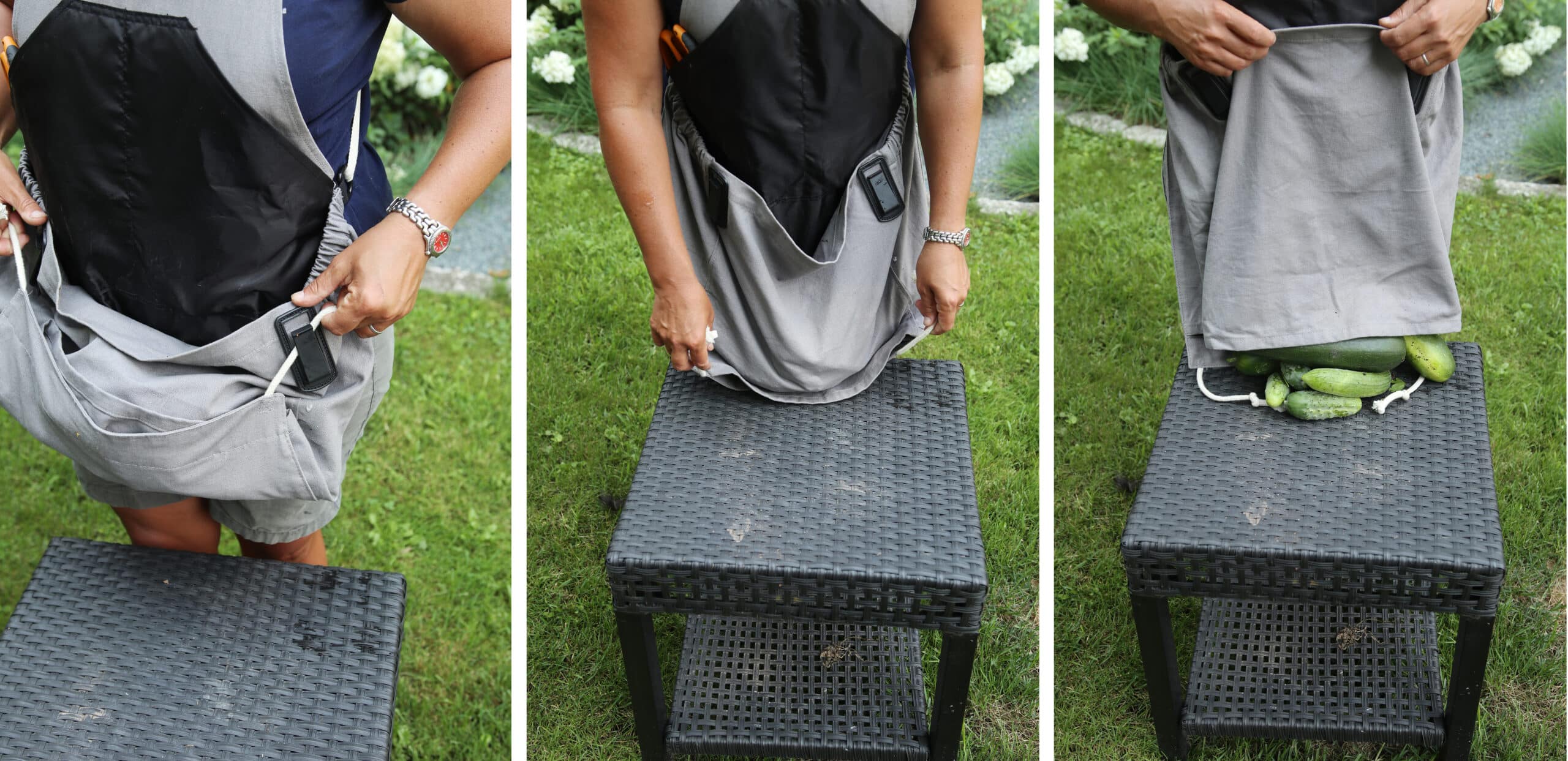
The straps cross in the back providing great support for a big harvest, including way-too-big cucumbers and oversized zucchinis that were hiding in the foliage and side pockets in the black waterproof front are a great place to keep your phone and pruners.
In addition to keeping up on the harvest, two other fall gardening tasks are on my mind right now. I’m a believer in pruning when you think of it and when you have the tool in your hand, but it’s best to be a little cautious about pruning in fall. You don’t want plants to push out a bunch of new growth that won’t have time to harden off before it freezes. But it is an excellent time to clean up dead, damaged or diseased wood.
For instance, our poor Cercis canadensis ‘Forest Pansy’ (aka redbud) had something terrible happen when we were gone. The leader broke right off. Apparently this isn’t uncommon with ‘Forest Pansy’ so I’m hoping it can be salvaged. Unfortunately I didn’t realize this had happened until recently. The last thing I want is that leader flopping around and ripping down the rest of the tree when the heavy snow of winter comes.
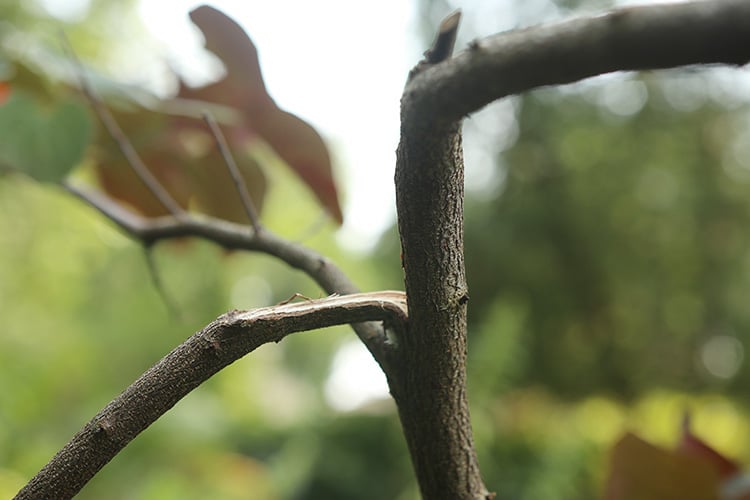
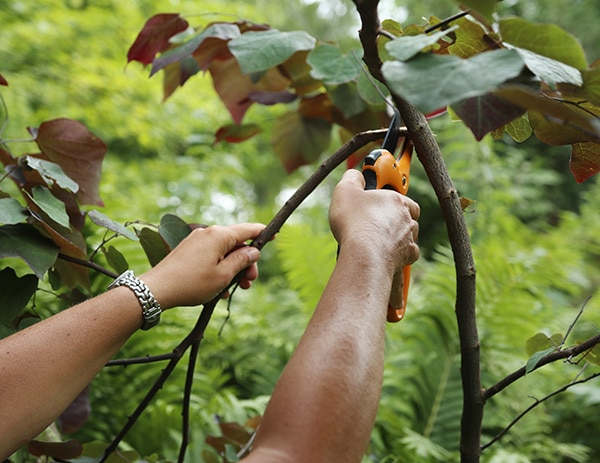
One of the most important things you can do when pruning is use clean, sharp tools that are the right size for the job. Because this is a young tree, I used ratcheting hand pruners that were big enough to make the cut and strong enough to make it very cleanly. Clean cuts heal much faster. These pruners also have a little cleaning swab built right in so you can swipe any sap off the blade right away. Clever!
I also used the hand pruners to clean up dead branches on the Chionanthus virginicus (aka fringe tree) that is still recovering from a move about three years ago. It’s always good to cut out dead wood to help prevent disease.
Speaking of dead wood, we have a lot of it on some evergreens, and I hate the way it looks. Evergreens look so much nicer when dead branches at the bottom are cleaned up. I don’t love “lifting the skirts” of evergreens, but sometimes they do that all by themselves so I’d rather have clean trunk down there. For this job I switched to some heavy duty tools. The Premium Pruning Loppers can do some serious cutting. They offer a mechanical advantage by having a ratchet. This means that you have to open them and close them to get the ratchet to work, causing the cut to be made with very little effort. I especially appreciate the ability to extend the handles to reach tall branches.
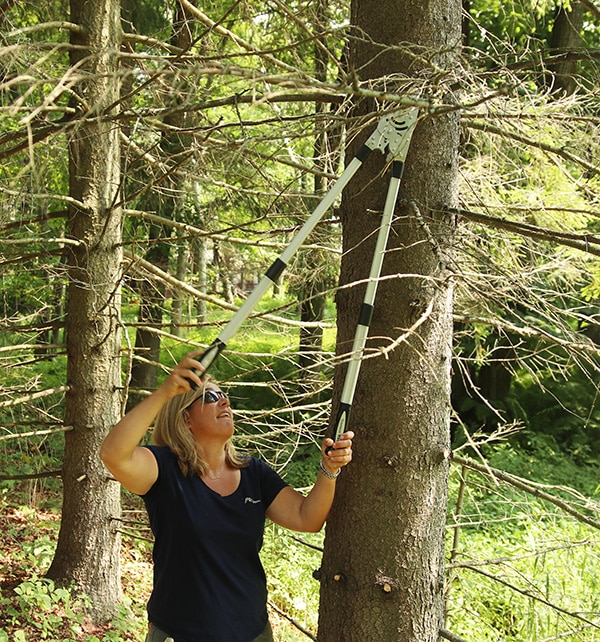
But when you’re dealing with a branch that even those big loppers can’t handle, a saw is the way to go. I know what you’re thinking: Ugh, saws are hard. (Are you thinking that? Because I used to think that.) The thing is, saws aren’t difficult to use at all so long as you have a good, sturdy one with a nice, sharp blade. I’ve tried a few folding pruning saws in the past, but this one is my favorite. It has a very long, stiff blade that locks very securely in place and doesn’t wobble all over the place when you’re starting your cut.
Although it’s not as important on dead wood, there is a right way to make a cut on a big branch. Start a bit away from the trunk. For a branch this size I did about 4 inches, but you want to extend that out a bit for a larger branch. Cut from under the branch, about one-third of the way up. Then cut from on top, about an inch farther from the trunk than where you made the bottom cut. This will keep the branch from tearing down the trunk. With the weight of the branch removed, you can go back to where you want your final cut—just a touch proud of the trunk—and make a nice clean finish cut.
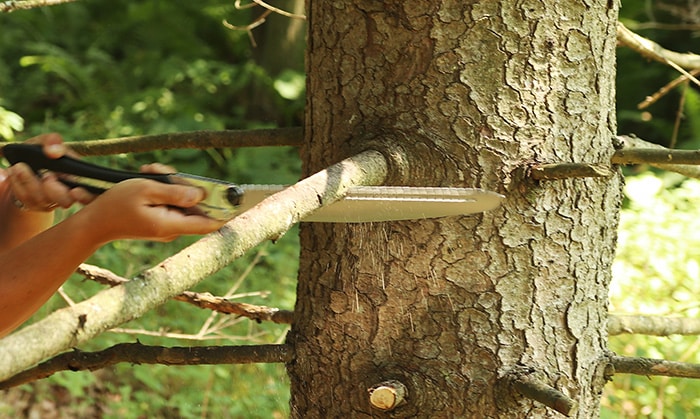
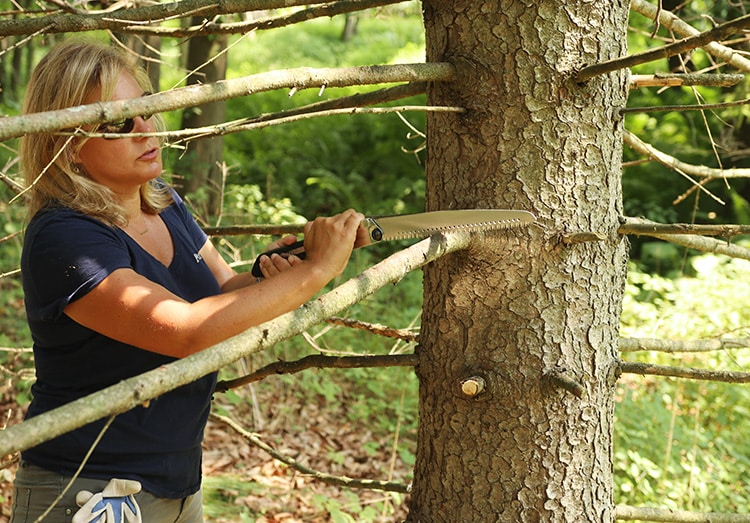
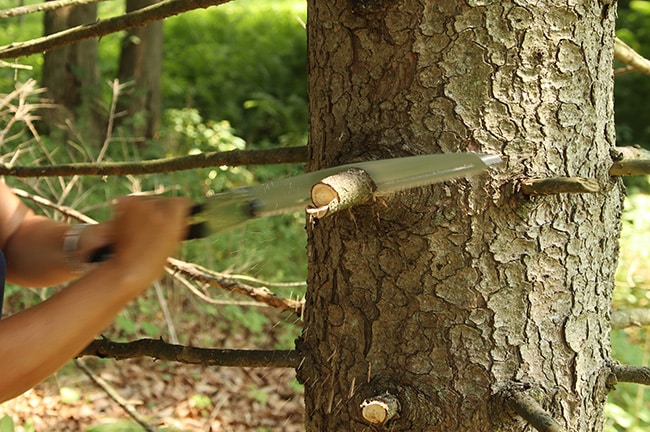
The job all gardeners associate with fall is cleaning. Even if you choose not to do a big cleanup of your garden in fall (and there is increasing research that suggests that may have great benefits, particularly for wildlife), you have to keep weeding. At this time of year, when I feel like I’ve been weeding constantly for five months (that’s because I have been), I remind myself that every weed I pull now is possibly hundreds more I won’t have to deal with next year. And if I can get around to mulching some more, that’s even better.
Here’s how I weed: Pull weeds frantically, throwing them back onto the lawn and creating big piles, then picking it all up later. I’m not saying it’s a great system, but it’s the one I always go back to. But getting those piles moved is almost worse than the actual weeding. These garden debris bags might be the coolest cleanup method I’ve found yet and yet the idea is so simple. They are heavy-duty tip bags with a batten around part of the opening. This creates a U-shape that is easy to flop the flat part on the ground and rake weeds (and leaves, because we know that’s coming) into or even just sort of shovel in with your hands. They also stand up nicely, so if you are a better planner than I am you could throw your weeds into it from the get go.
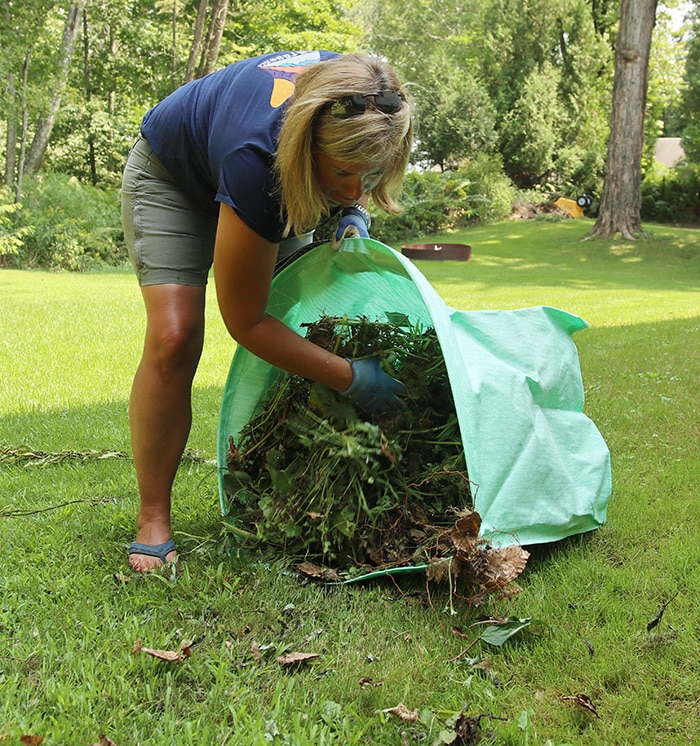
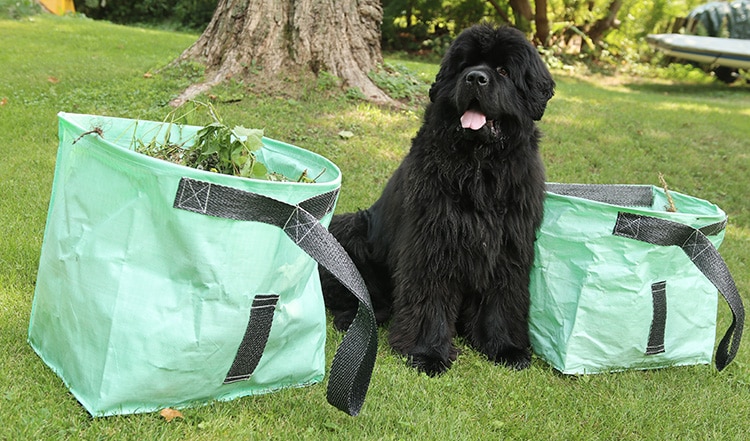
These are much nicer than garden tubs for cleanup, in my mind. And they have huge straps so you can drag them to the compost pile or refuse area and nice big handles on the side and bottom to make dumping easier. And I doubt it was intended for this, but I also noticed that on the small back you could hold the side without the batten against your waist and use it to collect from above. I can see this being really handy for light tree pruning or even harvesting apples.
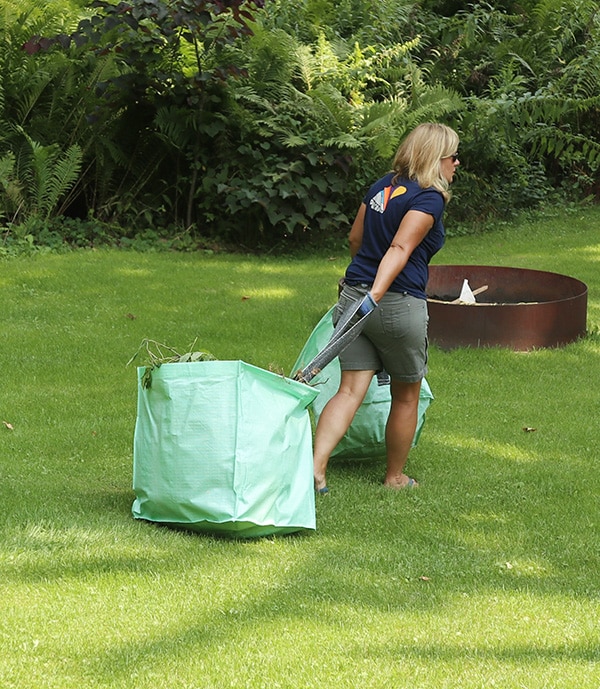
Don’t worry, I’m still in full summer mode here, but I know that fall can sneak up on us before we even smell the pumpkin spice coming. Chipping away at these little jobs now and having all the tools I need for them, will make getting the garden in shape that much easier.
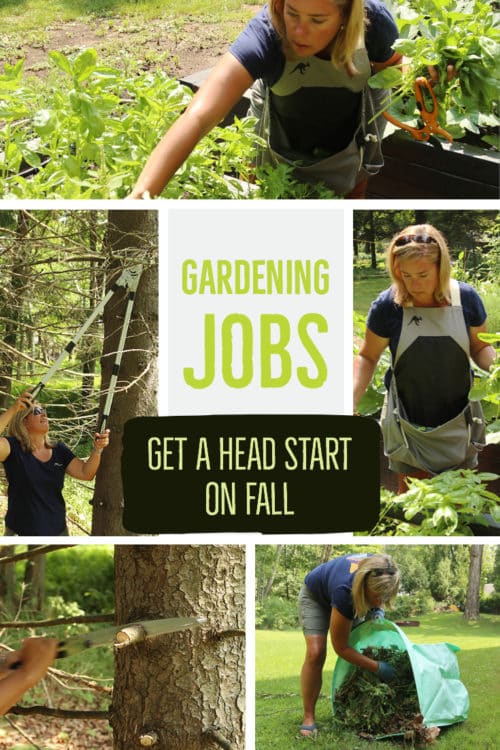

6 Responses
Love that apron – I’m forever going to my garden and forgetting to take along something to put my harvest in. The apron sure looks like it would solve that issue
We let our Forest Pansy go crazy with beautiful new growth. But floppy summer growth on this tree needs pruning because those tend to be the branches that break come winter. Thanks for the reminder we better do that NOW!
Thanks for all the garden clean up tips and resources. I agree that fall is already starting to show up in low evening temperatures. And yesterday I had sparrows by the dozens flocking to my feeders. Always a sure sign that summer is coming to a close.
It sort of hurts my brain to think about it. Summer seems so fleeting. It’s not that I mind autumn; it’s actually quite lovely. It’s just that winter is so hideous.
Ugh. If I don’t pick up the debris as I go, I hate myself when I am tired and want to stop weeding but have huge piles all over the yard. I typically use 5 gallon buckets that are lying around or the wheelbarrow, but those garden debris bags are looking mighty tempting.
I’ll be completely honest: Sometimes I let the piles sit in hopes that the weed fairy (who I suspect is really Mr. Much More Patient) will pick them up.